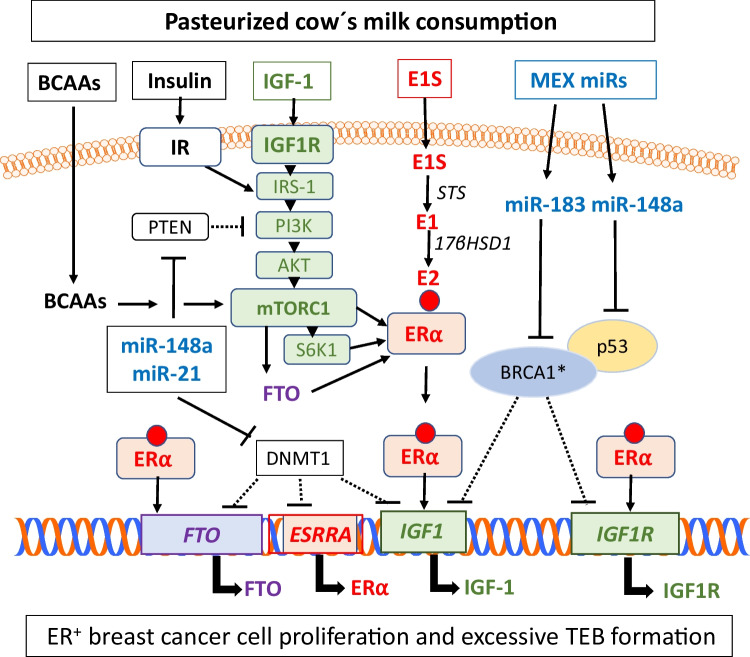Fig. 1.
Synergistic interaction of milk-induced signaling pathways between branched-chain amino acids (BCAAs), insulin, insulin-like growth factor 1 (IGF-1), estrone sulfate (E1S), and milk exosome (MEX)–derived microRNAs (miRs) in breast cancer (BCa). Consumption of pasteurized cow’s milk increases circulatory levels of BCAAs, IGF-1, E1S, miR-148a, and miR-21 that may reach mammary gland epithelial and stromal cells. BCAAs and IGF-1 activate the mechanistic target of rapamycin complex 1 (mTORC1), which promotes the translation of estrogen receptor-α (ERα) and fat mass and obesity-associated gene (FTO). Phosphorylation of ERα by the kinase S6K1 and estradiol (E2) ligand binding activates ERα which stimulates the expression of IGF-1 and IGF-1 receptor (IGF1R). BCa cells are able to convert E1S to E2 via the action of steroid sulfatase (STS) and 17β-hydroxysteroid dehydrogenase type 1 (17 HSD1). Physiologically, BRCA1 via direct interaction with p53 inhibits gene expression of IGF1 and IGF1R. However, loss-of-function mutations of BRCA1* enhance IGF-1 and IGF1R expression. MiR-148a signaling via suppression of p53 and DNA methyltransferase 1 (DNMT1) enhances the expression of IGF-1, ERα, and FTO, a m6A RNA demethylase, that further enhances ERα expression. In addition, E2 promotes FTO expression. Individuals with adipogenic SNPs of FTO may exhibit increased susceptibility for milk-mediated FTO expression. MEX miR-148a-induced suppression of p53 and MEX miR-183-mediated suppression of BRCA1 may further enhance IGF-1 signaling in BCa

